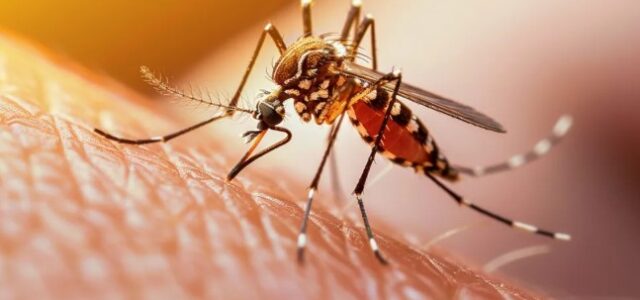6000 Infected in 3 Weeks, China’s Unleashes “Cannibal Insects” in Outbreak Fight – In an extraordinary attempt to control its worst chikungunya outbreak to date, China is releasing swarms of giant, non-biting mosquitoes whose larvae feed on the very insects responsible for spreading the virus.
These predators, known as Toxorhynchites splendens or more commonly, “elephant mosquitoes” can grow up to 2 centimeters long. Unlike their disease-carrying cousins, they pose no threat to humans. Instead, they prey on Aedes mosquitoes, the main culprits behind chikungunya, dengue fever, Zika, and yellow fever.
The innovative mosquito release is part of a broader emergency response in Guangdong province, where over 6,000 chikungunya infections have been reported in the city of Foshan within just three weeks. Health officials are combining this unconventional method with more traditional measures, including mass PCR testing, patient isolation, and widespread disinfection strategies reminiscent of China’s earlier COVID-19 containment efforts.
The larvae are being distributed by researchers at Sun Yat-sen University’s Zhongshan School of Medicine. Each larva is capable of consuming up to 100 Aedes larvae, offering a natural method of biological control.
Foshan has also introduced another biological ally a local species of fish known for feeding on mosquito eggs and larvae. More than 5,000 of these fish have been released into rivers and ponds throughout the city.
To support the growing number of patients, the government has designated 53 hospitals specifically for chikungunya treatment, outfitting more than 3,600 beds with mosquito nets. Plans are already underway to expand capacity further, according to reports from China’s state broadcaster, CCTV.
Neighboring Guangzhou is also ramping up prevention. Authorities have published a risk map covering 120 communities and launched a week-long mosquito control campaign with twice-daily fogging operations.
In addition to natural predators, Sun Yat-sen University also runs a mosquito control facility that releases millions of sterile male mosquitoes each week to reduce wild populations through controlled breeding disruption.
Chikungunya, a viral disease causing high fever, intense joint pain, nausea, and fatigue, was first identified in Tanzania in 1952. China reported its first imported case in 2008 and saw a minor outbreak in 2010. Since then, only isolated cases have occurred until this recent surge.
Due to the escalating situation, the U.S. Centers for Disease Control and Prevention (CDC) has indicated plans to issue a travel advisory for China.
